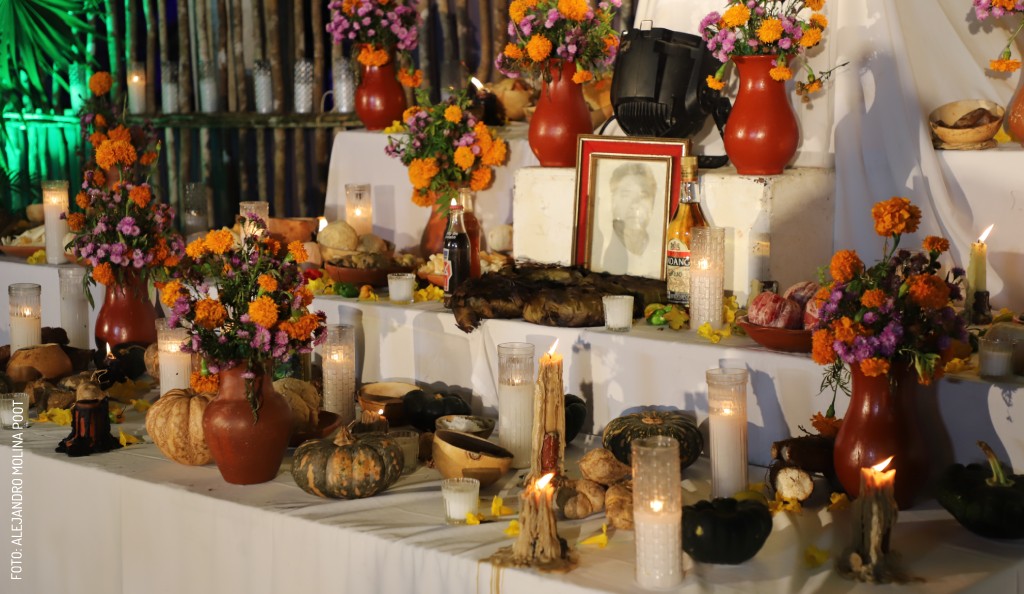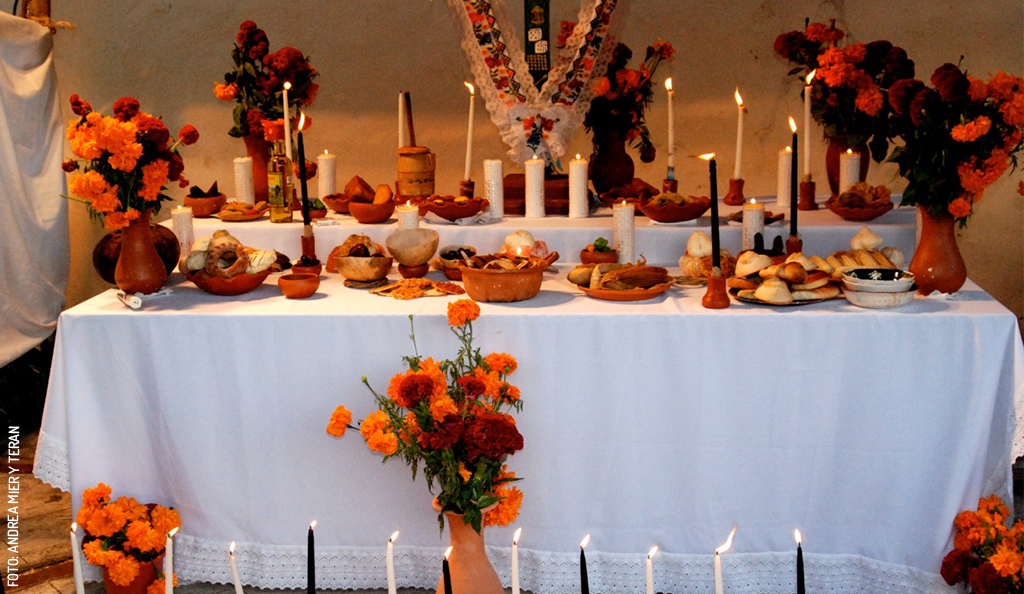
Janal Pixan or Day of the Dead Altars in Yucatán
Janal Pixan or Day of the Dead Altars in Yucatán
The “right” way to set up a Finados, Janal Pixan, or Yucatecan Day of the Dead altar may vary greatly within the state, depending on the region, each family’s tradition, and several other factors; in fact, it’s easier to talk about what doesn’t go on a Janal Pixan altar than it is about what does. As we mentioned in our article dedicated to Janal Pixan, intention is what matters most: even a piece of bread and a glass of water are sufficient offerings.
However, here’s a guide that will help you prepare and decide what type of altar works best for you and yours.
What you’ll need to prepare your Janal Pixan or Yucatecan Day of the Dead altar
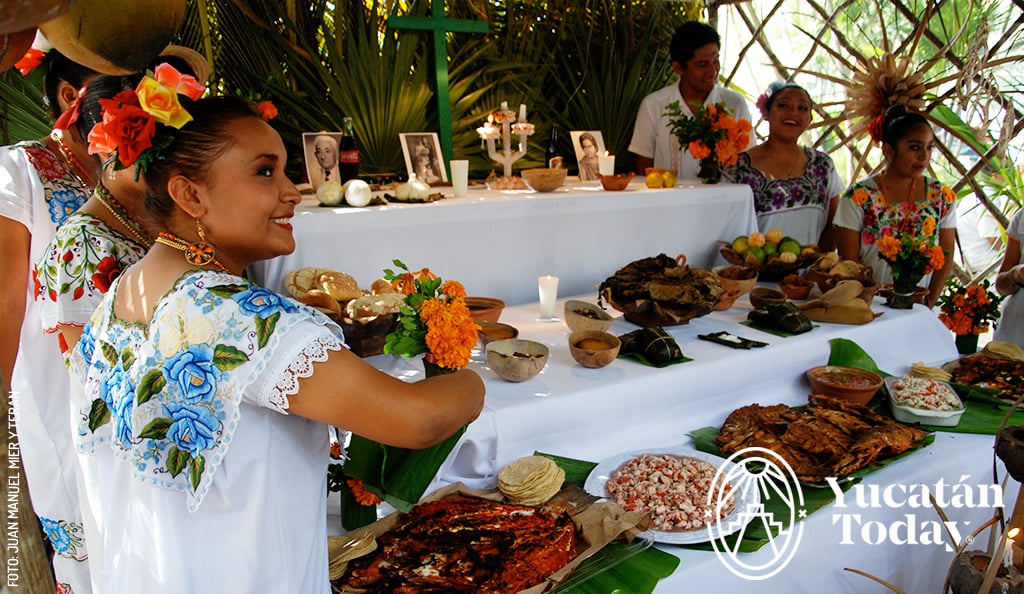
The basics
- A table
- Pictures of your deceased loved ones
- Candles, in different colors for children and white for adults
- Incense or copal
- Flowers
- Bread, fruit, and candy
- Your dearly departed’s favorite food and drinks (remember not to use glassware); on the last day, a mukbilpollo or pib
- Water
The extras (according to your own beliefs/taste)
- A wooden cross painted green, or a different religious image
- A white tablecloth or, alternatively, banana or palm leaves to cover the table
- Some believe the altar is supposed to be set up in three levels to evoke the Maya cosmovision (heaven, earth, and underworld)
- Toys (if you’re setting up an altar to deceased children)
- Jícaras (calabashes) to place the food, incense, etc.
- Some believe there must be at least seven jícaras: four represent the boys in the four corners of the fields, and three represent the girls who work around the comal (tortilla griddle); these recipients contain chocolate, corn or flour atole, and water (a purifying element)
- Soap for the souls to wash up before eating
The non-traditional/inauthentic
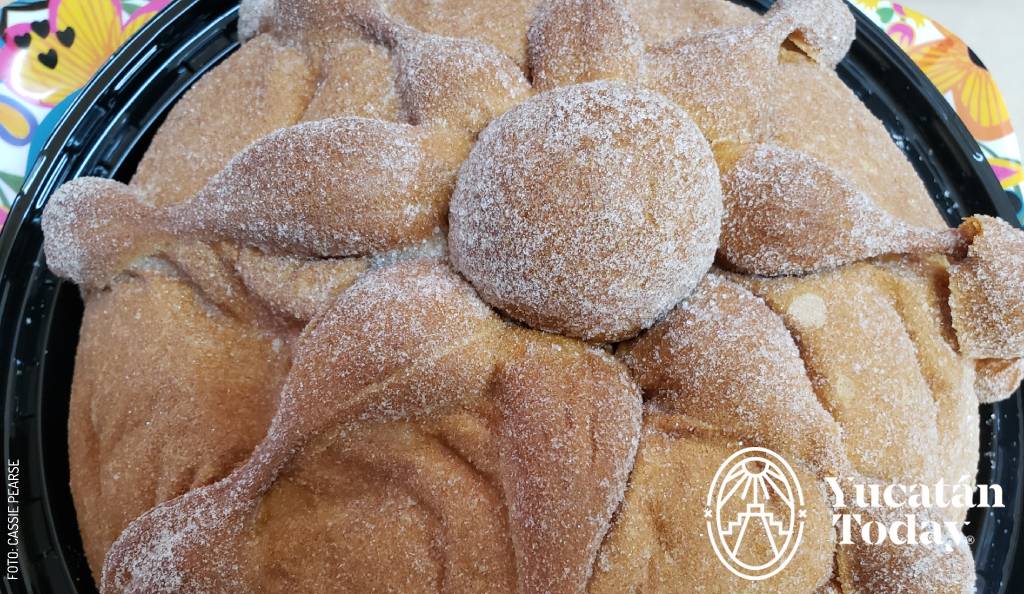 While a few of these elements are staples of altars elsewhere in México, they are not part of Yucatecan tradition.
While a few of these elements are staples of altars elsewhere in México, they are not part of Yucatecan tradition.
- Skulls in any way, shape of form (including catrinas, candy skulls, paper skulls, or any other imagery that evokes death)
- Pan de muerto
- Tools, utensils, and anything that evokes the deceased’s occupations
- Live animals
Where to Find Everything You Need for Your Janal Pixan Altar
You might think that the list of items needed for a Janal Pixan altar is as extensive as it is difficult to find. But don’t worry—I’m here to share some tips my grandmother used when gathering everything necessary to set up a Janal Pixan altar that truly honors our loved ones.
No hay nada que no se pueda conseguir si sabes donde buscarlo. Para esta tarea, mi recomendación es embarcarte en una travesía por el Mercado Lucas de Gálvez; para ubicarte, te guiaré entrando por el acceso principal sobre la calle 65-A del Centro.
Fruits, vegetables, and recados
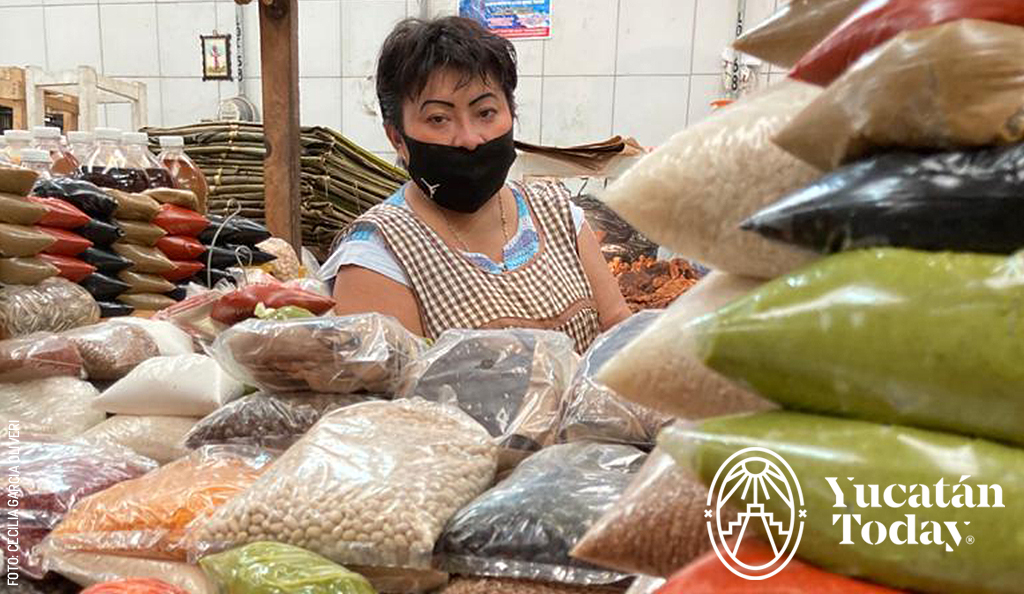 The first thing you’ll see on the left side is a large stand with seasonal fruits and vegetables. Here, you can find jícamas, mandarins, and oranges (also known as “chinas” in Yucatán) to prepare your xe’ek’ (jícama and citrus salad). At the same stand or the ones nearby, you’ll also find ground chili (if you like your xe’ek’ with a spicy kick) and the traditional recados to prepare your loved ones’ favorite dishes.
The first thing you’ll see on the left side is a large stand with seasonal fruits and vegetables. Here, you can find jícamas, mandarins, and oranges (also known as “chinas” in Yucatán) to prepare your xe’ek’ (jícama and citrus salad). At the same stand or the ones nearby, you’ll also find ground chili (if you like your xe’ek’ with a spicy kick) and the traditional recados to prepare your loved ones’ favorite dishes.
Yucatecan altar basics
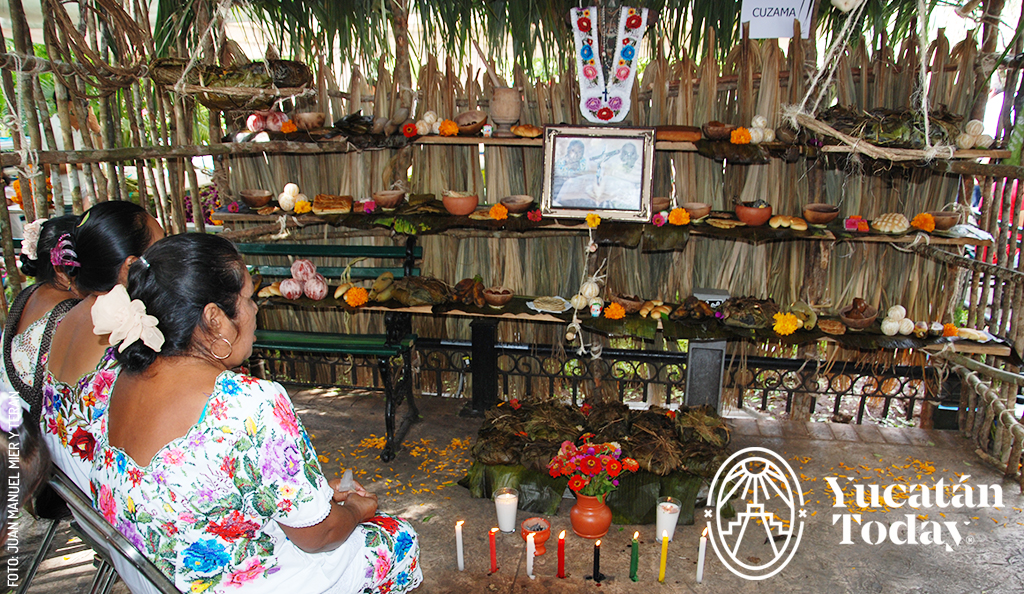 Once you say goodbye to your trusted negociantes (vendors), continue walking north along the main aisle of the market. You’ll come across a set of shops specializing in religious figures; you’ll know you’re there by the distinctive smell of incense. Here, you can find the cross and candles for the altar. Remember, if the altar is for an adult, the candles should be white; if it’s for a child, they should be colored. In these same shops, you can also find jícaras to place the xe’ek, salt, beverages, etc. It’s important not to use glass pieces on your altar, as it’s believed that spirits might get frightened by their own reflections.
Once you say goodbye to your trusted negociantes (vendors), continue walking north along the main aisle of the market. You’ll come across a set of shops specializing in religious figures; you’ll know you’re there by the distinctive smell of incense. Here, you can find the cross and candles for the altar. Remember, if the altar is for an adult, the candles should be white; if it’s for a child, they should be colored. In these same shops, you can also find jícaras to place the xe’ek, salt, beverages, etc. It’s important not to use glass pieces on your altar, as it’s believed that spirits might get frightened by their own reflections.
Hold onto your bags (or sabucanes, as we say in Yucatán) and keep going down that same aisle. Pay attention, as you’ll see vendors who don’t have established stalls but are set up on the sides selling masa for atole, flowers, or more fruits and vegetables.
Flowers and more flowers
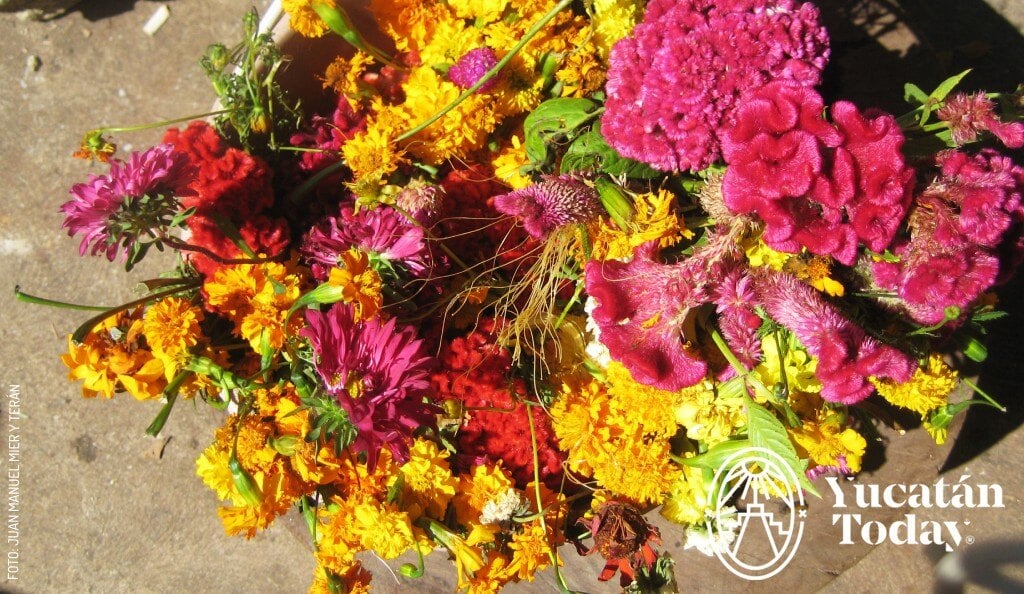 As you get to the end of the market and spot the food stalls (you’ll recognize them by their Coca-Cola signs), take a left turn. On your left, you'll soon notice one of the recently remodeled areas of the Lucas de Gálvez market. However, to your right, on Calle 56, you’ll find a whole row of stalls with a wide variety of flowers. Let the colors and scents pull you in and pick your favorites to decorate your altar. In Yucatán, we often use a flower called xpujuc—feel free to ask the vendors for their recommendations for altars too.
As you get to the end of the market and spot the food stalls (you’ll recognize them by their Coca-Cola signs), take a left turn. On your left, you'll soon notice one of the recently remodeled areas of the Lucas de Gálvez market. However, to your right, on Calle 56, you’ll find a whole row of stalls with a wide variety of flowers. Let the colors and scents pull you in and pick your favorites to decorate your altar. In Yucatán, we often use a flower called xpujuc—feel free to ask the vendors for their recommendations for altars too.
Essential sweets for your Day of the Dead altar
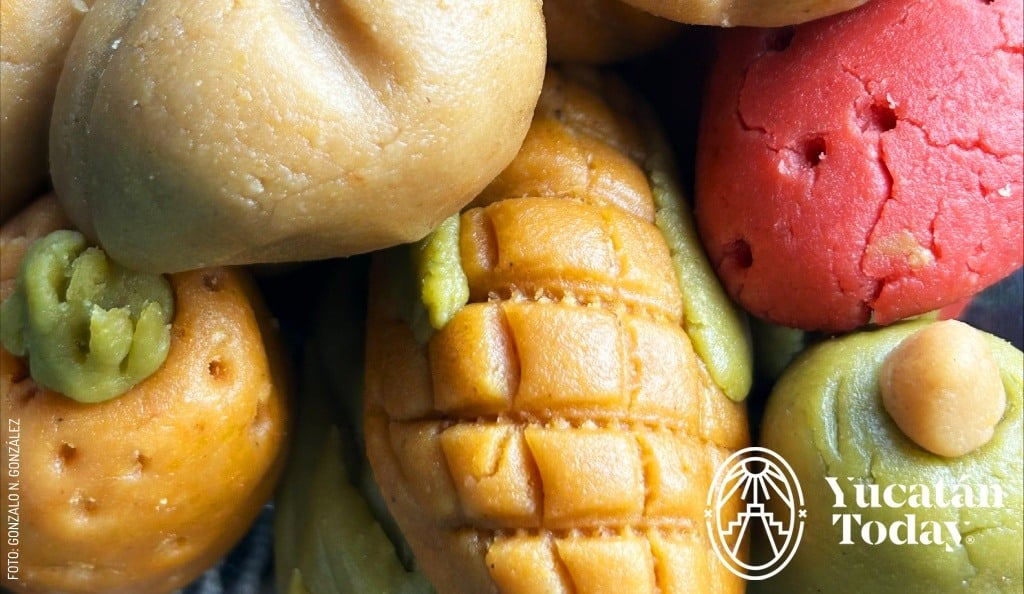 Craving something sweet? Of course, sweets are a must for any altar. Head over to Calle 67 and take a turn down one of the aisles on the left side. You'll find stalls packed with all sorts of goodies—everything from traditional treats like pumpkin seed marzipan, candied papaya, and nance, to more playful options like sugar skulls and even creative designs like candy catrinas, tiny plates of Mexican dishes like mole, and fun ‘tomb’ sweets that reveal a skull when you pull a string. Everything is made from candy!
Craving something sweet? Of course, sweets are a must for any altar. Head over to Calle 67 and take a turn down one of the aisles on the left side. You'll find stalls packed with all sorts of goodies—everything from traditional treats like pumpkin seed marzipan, candied papaya, and nance, to more playful options like sugar skulls and even creative designs like candy catrinas, tiny plates of Mexican dishes like mole, and fun ‘tomb’ sweets that reveal a skull when you pull a string. Everything is made from candy!
The “pan” for the pib
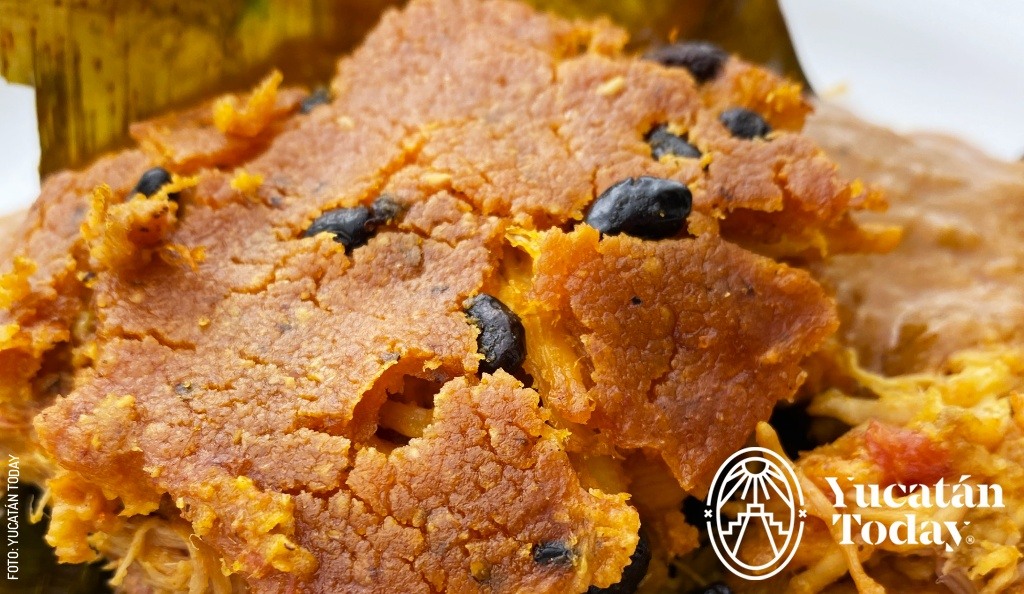 Planning to make pib? Next to the main entrance of the Lucas de Gálvez market, on Calle 65-A, you’ll find three hardware stores where you can buy the baking pans commonly used to prepare pibes.
Planning to make pib? Next to the main entrance of the Lucas de Gálvez market, on Calle 65-A, you’ll find three hardware stores where you can buy the baking pans commonly used to prepare pibes.
You can choose from various sizes and prices; if you need help, just ask the vendors—they’ll be happy to assist you.
And because the living also get hungry, a taco stop
Did all that walking make you hungry? Mercado Lucas de Gálvez is full of legendary food stalls—take the chance to try some. For instance, the famous tortas and tacos of cochinita or lechón from “La Tía,” also located at the central access of the market.
Exploring the market at this time of year lets you marvel at the colors, aromas, and the nostalgia of knowing that we’ll soon be welcoming our beloved ones who have gone ahead. This is why we prepare with such care.
First published in Yucatán Today print and digital magazine no. 442, in October 2024.

Author: Sharon Cetina
Marketer by trade, entrepreneur at heart, and a total extrovert. I'm on a mission to share the amazing beauty of Yucatán with the world through my work.
In love with Yucatán? Get the best of Yucatán Today delivered to your inbox.
Related articles
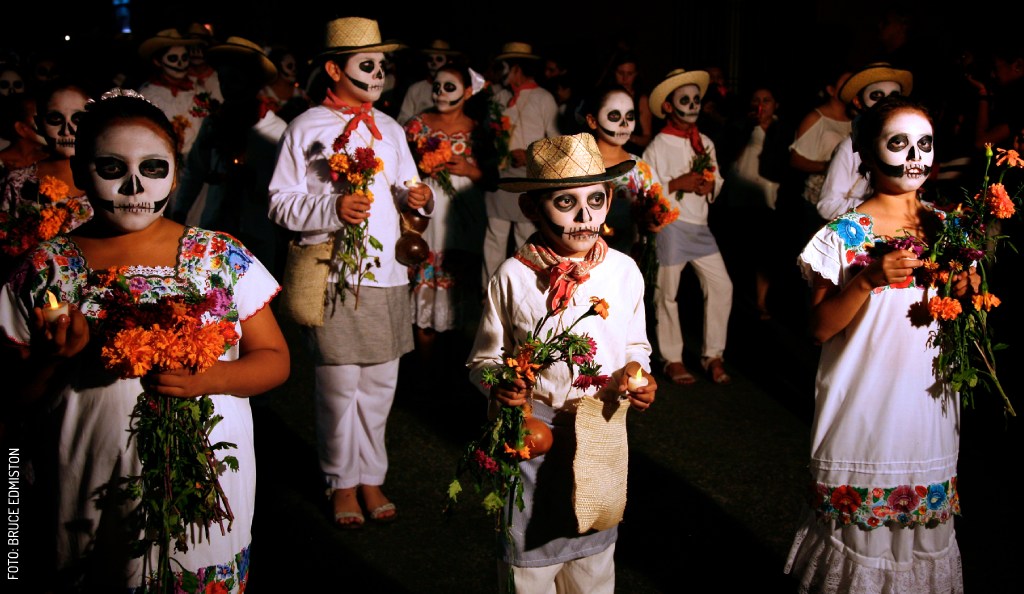
Celebrating Janal Pixan with Kids
What to do in Janal Pixan with kids? Learn about all the ways you can enjoy this tradition, from the market to the Stroll of the Souls.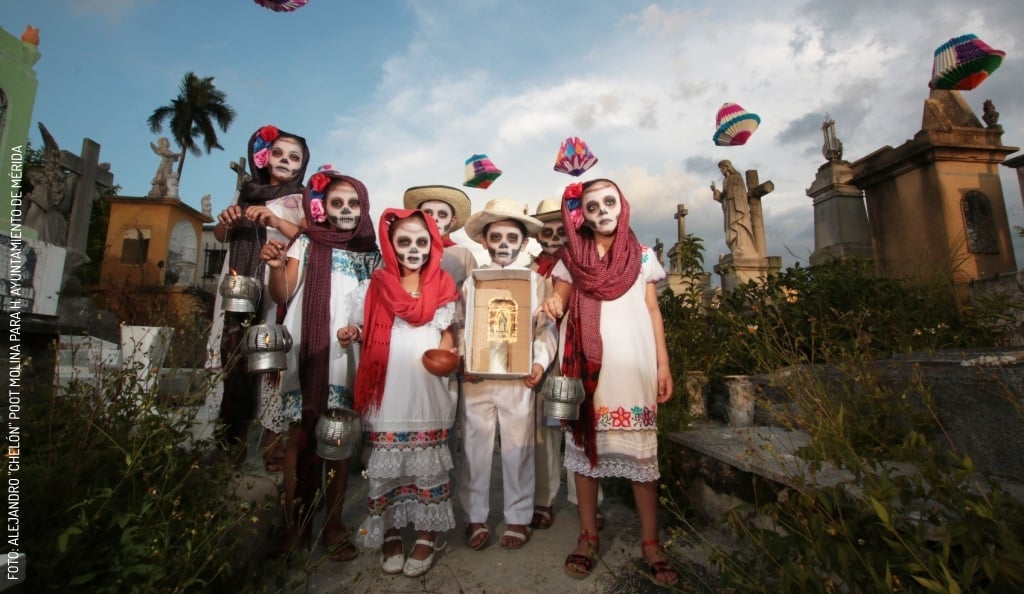
How to Enjoy Mérida's Festival of Souls… and Live to Tell
Your guide to enjoying the Festival of Souls 2025 and experiencing Janal Pixan in Mérida. Parades, altars, catrinas, pib, and the magical Paseo de...